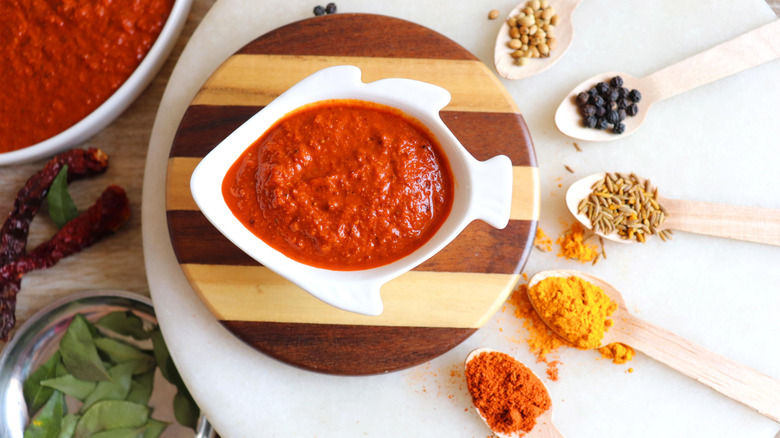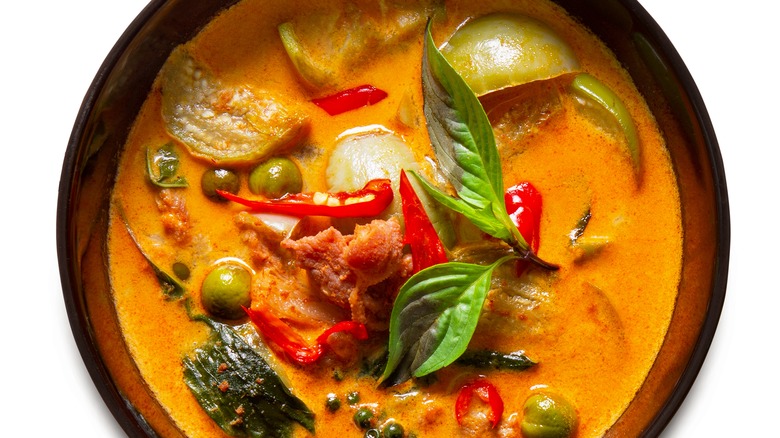How To Choose The Absolute Best Thai Curry Paste For Your Dish
Whether using a premade Thai curry paste or creating one from scratch, get ready for an earthy flavor explosion on your palette. Thai food is famous for its deeply rich and creamy taste and textures, but also for the wide range of possibilities based on one thing: the type of curry paste you choose. The options come down to more than just personal preference since each must be perfectly paired with the specific curry dish you're making.
Thai curry paste, known as prik gaeng in Thailand, is quite simply a blend of spices, chiles, herbs, and culinary aromatics such as garlic, ginger, lemongrass, and shallots, all pressed together with a mortar and pestle. The possible additions are myriad, but what distinguishes one curry paste from another are the ingredients you choose. When all is said and done, you'll end up with some variation of the basic red, yellow, and green pastes, and maybe their close cousins, panang and massaman.
Intricacies abound when pairing curry paste with your food, but generations of Thai chefs have established some baseline assumptions. Many believe that red and green curry pastes are versatile, pairing well with most types of meats and vegetables. Spicy yellow and massaman curry pastes are compatible with red meats and sturdy root vegetables, though less-spicy yellow versions are popular in many chicken curry recipes. Since chefs use varying amounts of spicy additions these days, it's far from an exact science, but color reveals a lot when selecting the right paste.
Peppers dictate the color and flavor of curry paste
To many diners, the spice level is what matters most when choosing a curry paste for cooking. That's especially true if you adore or abhor super-hot peppers. Incorporating peppers that land high on the Scoville scale (which measures the amount of capsaicin elevating the heat levels in peppers) will result in a much spicier curry paste. Since peppers are the core ingredient in Thai curry paste, and they largely dictate the paste color, you can get an idea of how spicy a paste is based on whether it's red, green, or yellow.
Just remember that any chef can toss in any ingredient to increase spiciness, so use these generalizations with room for variance. Withstanding intervention from added ingredients, expect that a red curry made with red peppers will set your mouth afire, a yellow paste takes the middle road, and a green-pepper paste creates a mild-mannered flavor that elevates lighter Thai dishes. But, don't be surprised to find regional Thai chefs arguing about those distinctions.
Some Thai dishes to consider for curry-paste distinction include stir fries, noodles, and fried rice, which thrive when based on red paste. Green curry paste elevates sauces, salad dressings, and finishing oils, while yellow curry paste creates excellent coconut chicken curry with potatoes. Remember that curry paste is not just for making a dedicated curry dish — all colors and types can add depth and deliciousness to soups, marinades, rubs, stir-fries, dips, and more.

